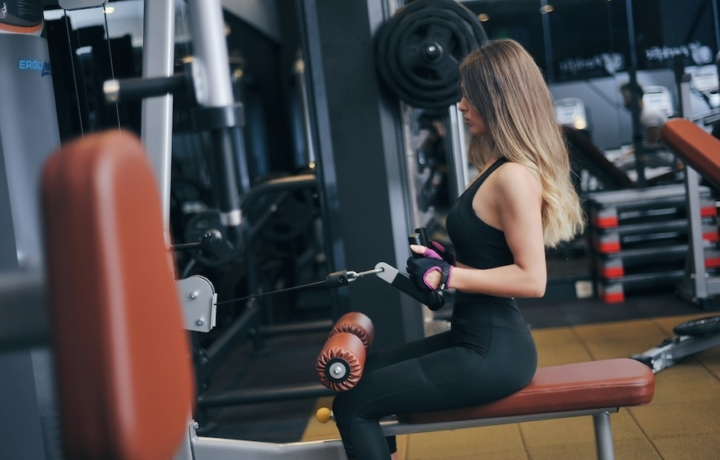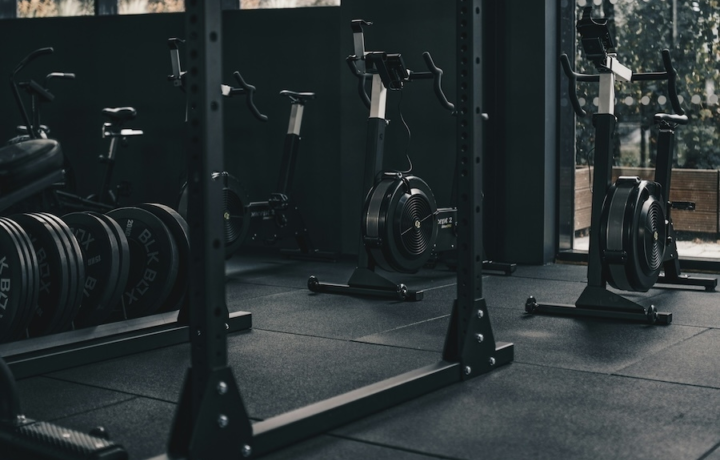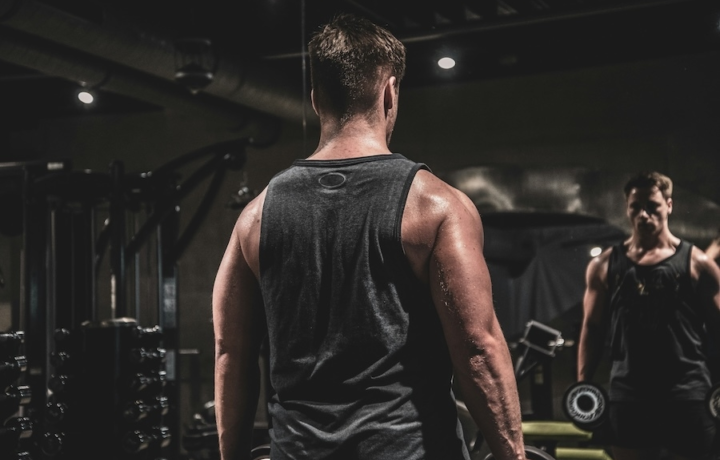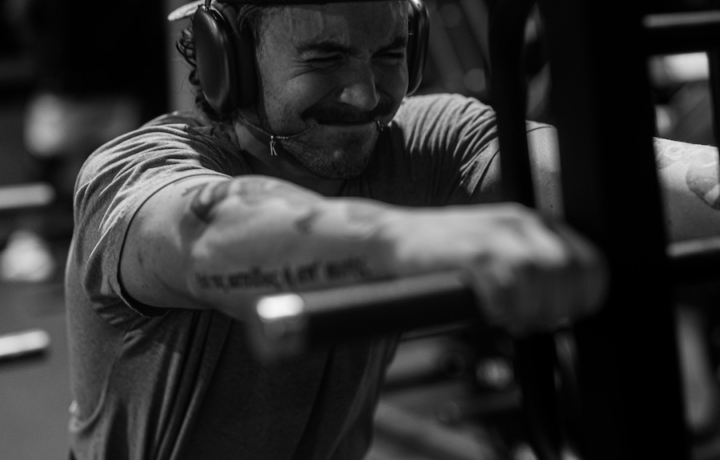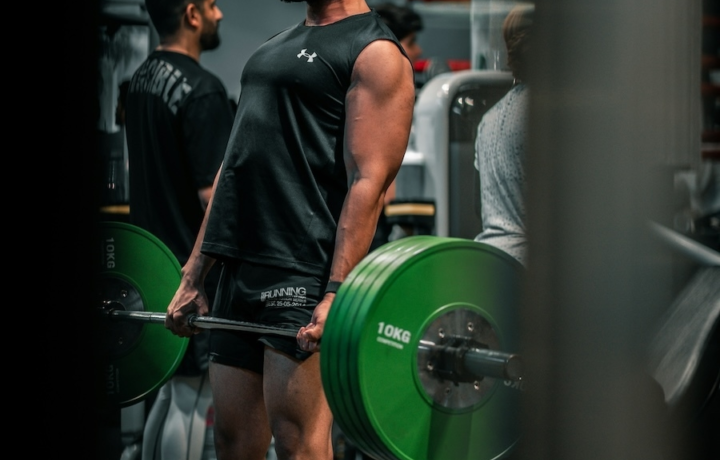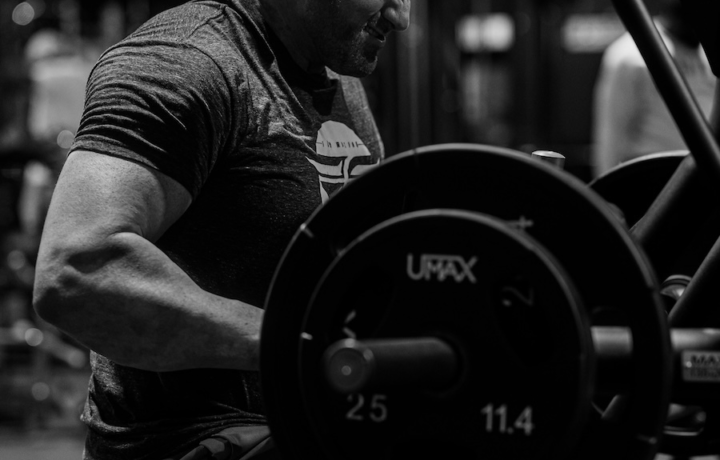Exercise
Dumbbell Rear Fly

Dumbbell Rear Fly
How to Perform
- Stand with feet shoulder-width apart holding a dumbbell in each hand, then hinge at the hips to bring your torso parallel to the floor while maintaining a neutral spine.
- Allow the dumbbells to hang directly beneath your shoulders with palms facing each other and a slight bend in your elbows.
- Brace your core and squeeze your shoulder blades together as you prepare for the movement, maintaining a flat back position.
- Inhale, then exhale as you raise both arms out to the sides, keeping the slight bend in your elbows consistent throughout the movement.
- Continue lifting until your arms are approximately parallel to the floor, forming a T-shape with your torso.
- Focus on using your rear deltoids and rhomboids to control the motion, rather than momentum or arm strength.
- Pause briefly at the top position, squeezing your shoulder blades together before slowly lowering the weights back to the starting position while inhaling.
- Maintain tension in your upper back throughout the entire set, avoiding any swinging or jerking motions.
Important information
- Keep your neck aligned with your spine throughout the exercise, avoiding the tendency to look up or strain forward.
- Choose a weight that allows you to maintain proper form—using too heavy dumbbells will cause you to recruit your trapezius muscles instead of targeting the rear deltoids.
- Make sure your elbows stay slightly bent at the same angle during the entire movement to protect your joints and maximize rear deltoid engagement.
- If you experience shoulder pain during this exercise, try reducing the range of motion or switching to a supported version where your chest rests on an incline bench.

Dumbbell Rear Fly
Exercise Details
Primary Muscles
Muscle Groups
Mechanic
Risk Areas
Built for progress
Take the guesswork out of training
Create personalized AI-powered workout plans that evolve with you. Train smarter, track every rep and keep moving forward, one workout at a time.






The dumbbell rear fly stands as a cornerstone movement for developing well-rounded shoulders and upper back definition. This intermediate-level exercise primarily targets the rear deltoids and trapezius muscles, creating that coveted 3D shoulder look that many bodybuilders and fitness enthusiasts pursue. When properly executed, it helps correct the muscular imbalances often created by our daily lives spent hunched over desks and devices.
Beyond aesthetic benefits, the rear fly serves as an excellent rehabilitation and recovery tool. The controlled nature of this movement allows for precise targeting of the posterior shoulder muscles, which are frequently neglected in typical training programs. This neglect can lead to rounded shoulders and potential injury, making the inclusion of rear flies particularly valuable for long-term shoulder health and posture improvement.
For strength enthusiasts, don't underestimate this seemingly simple movement. While you won't be hoisting massive weights with this exercise, the targeted strength developed in the rear deltoids and upper back translates to improved performance in compound lifts like deadlifts, rows, and even bench press. The enhanced shoulder stability gained from consistent rear fly training creates a more solid foundation for pressing movements.
The beauty of the dumbbell rear fly lies in its versatility. It can be performed standing, seated, or even lying face-down on an incline bench, making it adaptable to various fitness levels and environments. Whether incorporated into an intense bodybuilding routine or used as a corrective exercise during recovery phases, this movement delivers significant benefits with relatively low risk when performed properly.
For optimal results, many experienced lifters incorporate rear flies toward the end of their shoulder or back workouts, when the larger muscle groups have already been fatigued through compound movements. This sequencing ensures that the smaller, often stubborn rear deltoids receive focused attention when they might otherwise hide behind stronger muscle groups during earlier exercises.
FAQ - Dumbbell Rear Fly
Dumbbell rear flies primarily target the posterior deltoid (rear shoulder) muscles, while also engaging the trapezius, rhomboids, and infraspinatus muscles of the upper back. This comprehensive activation makes it excellent for creating balanced shoulder development and improving posture.
Choose weights that allow you to maintain perfect form while feeling tension in your rear deltoids throughout the movement—typically much lighter than what you'd use for pressing exercises. Most lifters benefit from dumbbells between 5-20 pounds, focusing on controlled movement rather than heavy loading.
The most common mistakes include using momentum to swing the weights, insufficient hip hinge positioning, and internally rotating the shoulders during the movement. Keep your chest parallel to the floor, maintain a slight elbow bend throughout, and focus on squeezing your shoulder blades together at the top of the movement.
Include rear flies 1-3 times weekly, either on shoulder days or back training sessions. Since rear deltoids recover relatively quickly and are often undertrained, you can safely target them more frequently than larger muscle groups, especially if you have rounded shoulders or postural issues.
Try face pulls, bent-over cable flies, or rear deltoid machine flies as alternatives that may feel more comfortable. You can also perform the movement lying face-down on an incline bench, which provides additional support and often reduces stress on the shoulder joint while maintaining muscle activation.




